#JAXA
Explore tagged Tumblr posts
Text

Art I made for my amazing space friend 🚀 ✨
#dcmk#detective conan#kaitou kid#kaishin#kuroba kaito#kaito kid#magic kaito#kaito kuroba#traditional art#mk1412#my art#shikishi#shikishi art#hayatsu#Jaxa#watercolors
202 notes
·
View notes
Text

Lunar station concept art from Japan Aerospace Exploration Agency (JAXA), undated.
115 notes
·
View notes
Text

SOURCE: NASA Johnson https://flic.kr/p/2qV7BAS
23 notes
·
View notes
Video
Lava and debris brighten Mercury's surface by European Space Agency Via Flickr: This is one of a series of images taken by the ESA/JAXA BepiColombo mission on 8 January 2025 as the spacecraft sped by for its sixth and final gravity assist manoeuvre at the planet. Monitoring camera 2 (M-CAM 2) took this photo at 07:17 CET, when the spacecraft was about 2103 km from the planet’s surface. The spacecraft’s closest approach of 295 km took place on the planet's night side at 06:59 CET. The bright patch near the planet's upper edge in this image is the Nathair Facula, the aftermath of the largest volcanic explosion on Mercury. At its centre is a volcanic vent of around 40 km across that has been the site of at least three major eruptions. The explosive volcanic deposit is at least 300 km in diameter. Nathair Facula is a major target for several BepiColombo instruments, which will measure the composition of the erupted material. This will teach us about what Mercury is made of, and how the planet formed. Also visible is the relatively young Fonteyn crater, which formed a ‘mere’ 300 million years ago. Its youth is apparent from the brightness of the impact debris that radiates out from it. Older material on Mercury's surface has become much darker from weathering as it aged. Rustaveli, seen roughly in the centre of Mercury in this image, is about 200 km in diameter. Within its rim is a ring of peaks, making it a so-called peak ring basin. These peaks barely poke above smooth material on Rustaveli’s floor, which suggests the crater has been flooded by lava. Interestingly, NASA’s Messenger spacecraft detected a magnetic signal coming from Rustaveli. When molten rock such as lava or impact melt solidifies, magnetic carriers within it align with the direction of the planet's magnetic field. As the planetary magnetic field naturally changes over time, eventually the 'locked in' magnetic field in the planet's crust no longer agrees with the planetary magnetic field, something that can be detected from space. BepiColombo's two magnetometer instruments will investigate this further. In the foreground of the image, the Mercury Planetary Orbiter’s medium gain antenna (top centre) and magnetometer boom (right) are visible. [Technical details: This image of Mercury's surface was taken by M-CAM 2 onboard the Mercury Transfer Module (part of the BepiColombo spacecraft), using an exposure time of 4 millseconds. Taken from a distance of around 2103 km, the surface resolution in this photograph is around 2330 m/pixel. The image has been lightly processed; its brightness and contrast have been adjusted.] [Image description: Planet Mercury in the background with its grey, cratered, pockmarked surface. In the foreground are some spacecraft parts.] Credits: ESA/BepiColombo/MTM; CC BY-SA 3.0 IGO
#BepiColombo#Bepi#MPO#MTM#Mercury#Solar System#JAXA#Aerospace#宇宙航空研究開発機構#ISAS#MMO#水星探査計画BepiColombo#水星磁気圏探査機MMO#水星探査#ESA#European Space Agency#Space#Universe#Cosmos#Space Science#Science#Space Technology#Tech#Technology#flickr
29 notes
·
View notes
Text
Venus Is Not Nekkid
aka what does Venus really look like?
Ok so you've probably seen pics of Venus like:
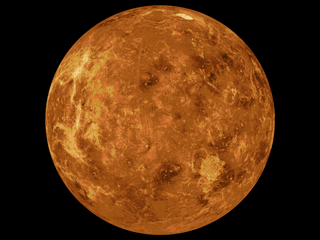
which is amazing 1990s radar data from NASA's Magellan spacecraft that discovered its surprisingly young, almost crater-free surface and fissures and lava flows and shield volcanoes:
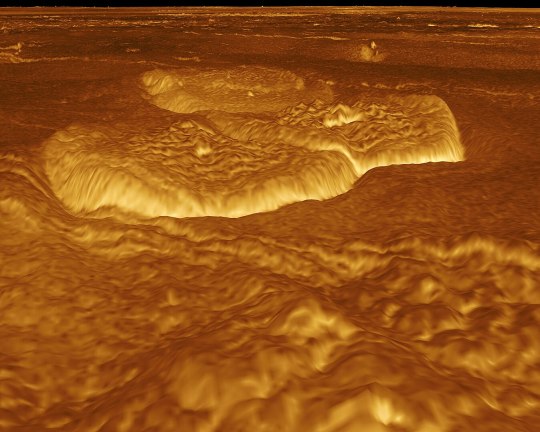
Which was a vast improvement, because apart from 6 photos of the surface by Russian landers asking "why me?", all we had before were grainy Mariner & Pioneer images from the 1970s showing Venus wrapped in featureless clouds in visible light or striped in ultraviolet:

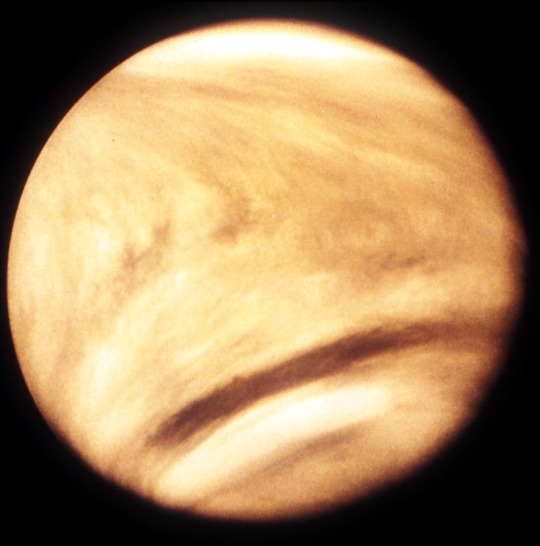
Magellan's radar peered through the clouds to reveal a surface less than 500,000 years old. Without plate tectonics to release heat, hotspots ooze continually, resurfacing the planet in a way that may resemble primitive Earth before plate tectonics.
More terrifyingly, Venus may have been habitable for billions of years until it had a massive flood lava catastrophe like the Earth at the end of the Permian, when 95% of life on our planet died. Except on Venus it was even worse, setting off a runaway greenhouse effect that boiled away the oceans.
Most solar system "family portraits" show Venus with Magellan's false-color radar data, naked, stripped of her thick blanket of clouds:
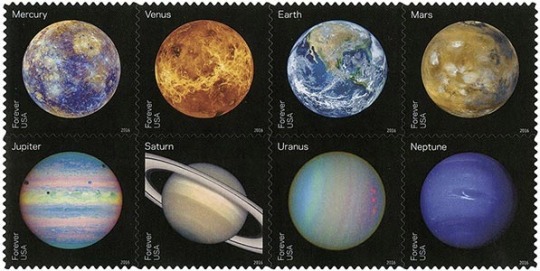
US "Views of Our Planets" stamps (Mercury also false color, Jupiter & Uranus UV I think)
But that's not how Venus looks through a backyard telescope. She's a shining white pearl, which was why the Greeks & Romans recognized her as Aphrodite/Venus.
In 2020, JPL engineer Kevin M Gill reconstructed a visible-spectrum portrait of Venus from old 1974 Mariner 10 probe data using UV and other odd wavelengths:

See this writeup on the image with a discussion of Venus' crazy clouds racing around the planet like a toxic hurricane.
A whole community of astronomers and image wizards has grown up hunting through old missions for data they can crunch and de-noise with data processing tools to create new, better images. Space agencies have taken note and now post data for them to play with.
So when 2015 Japan's dogged Akatsuki spacecraft finally made it to Venus after several mishaps, we got its first [UV images]:

Then they started posting raw data from all their instruments (UV and near-IR, because a white pearl is pretty but not as useful for science) and the image wizards went to work.

[two UV images combined by Damia Bouic]
Citizen scientist Damia Bouic has a whole blog post of gorgeous Venus images she's processed from Akatsuki data: Here's just a few. They're false color to bring out details, but I think (?) she's using the visible-spectrum colors of Venus for the color and the UV and/or IR data for saturation and brightness.
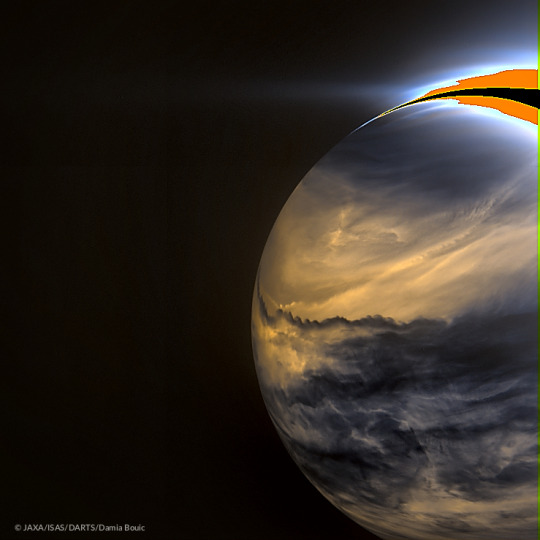
Venus' night side in infrared (detects heat). Check out that funky wave. clouds at the equator move the fastest, but I'm not sure what's causing that.
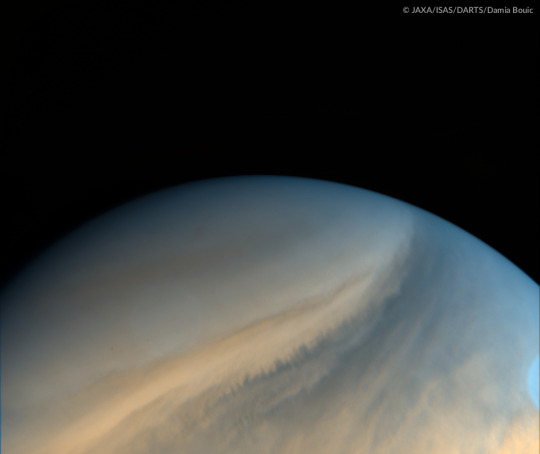
Another UV image processed by Damia Bouic
TL;DR: Venus is Beauty in visible light, the Beast on the surface, and I guess you'd call UV/IR views "I have a bad feeling about this."
621 notes
·
View notes
Text
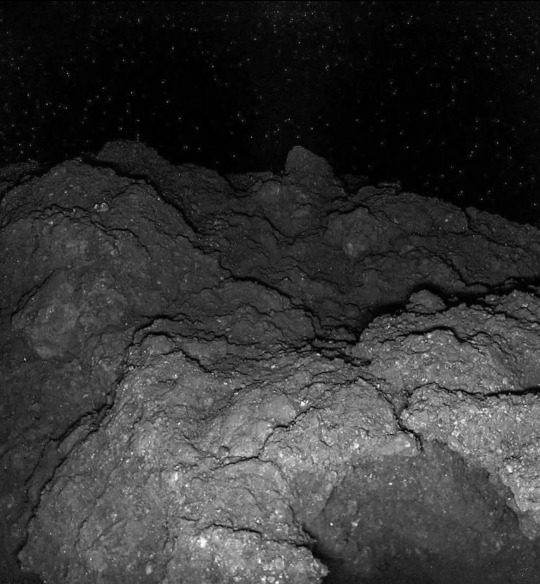
The surface of the asteroid Ryugu, as captured by the Japanese’s spacecraft Hayabusa2 (2018).
#asteroid#space#outer space#nasa#space photography#jaxa#Hyabusa2#ryugu#photography#nature photography#night sky#space exploration
174 notes
·
View notes
Text

Just a quick little study of Enceladus and Saturn! I might do another piece like this in the future, with a lot more attention to detail; I really love Saturn's moons!
As always, image ID will be in the reblogs. :)
#digital art#artists on tumblr#tolbachik art#space art#my art#space#digital painting#space exploration#moon#moons#cassini#planets#astronomy#nasa#roscosmos#esa#isro#cnsa#jaxa#saturn#enceladus#landscape art#spacescape#landscapes#spacescapes#digital landscape#digital illustration
41 notes
·
View notes
Text


JAXA found planet where you can hold hands with your demonic soulmate, and they're calling it "Earth."
15 notes
·
View notes
Text
JAXAのH3ロケット2号機打ち上げライブの後に流れたエンドロールが最高すぎると話題に!
田中伸幸@tanakas.eth@name6less9
62 notes
·
View notes
Text
Reentry of JAXA's Hayabusa spacecraft after sampling Asteroid Itokawa, viewed from earth.
16 notes
·
View notes
Text
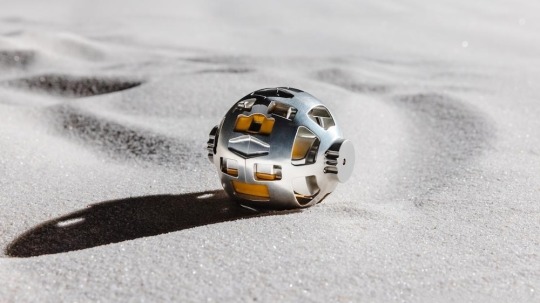

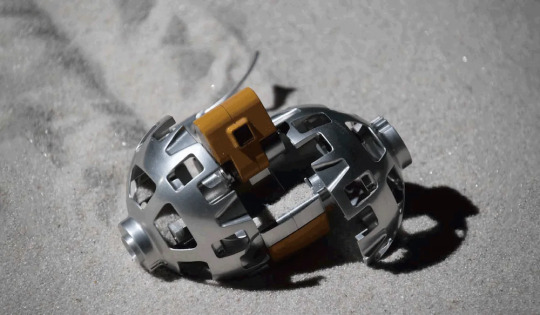

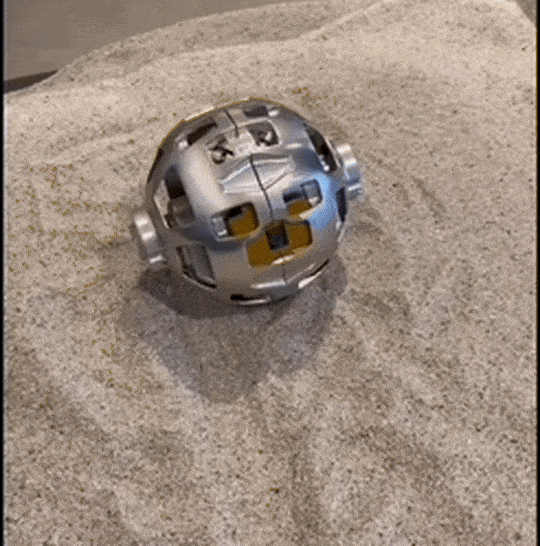
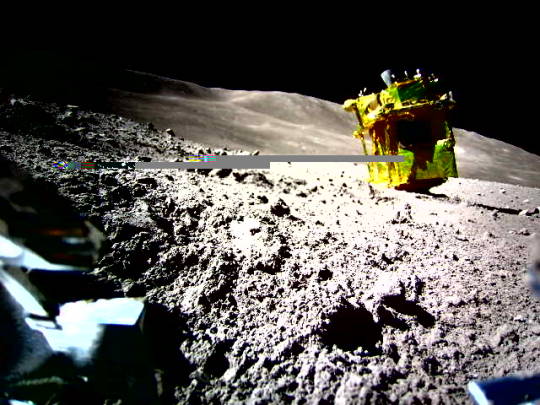
SLIM Lunar Excursion Vehicle 2 (LEV-2, AKA SORA-Q) by Tomy, JAXA, Sony Group, and Doshisha University (2023). The Smart Lander for Investigating the Moon, or SLIM (final photo), was launched from Japan on September 6 2023, due to make a precision lunar landing on January 19 2024. It will deploy LEV-2, an 8cm diameter, ball-shaped, transforming robot. Once on the surface of the moon, the robot splits, expands left and right, and a reaction trail pops out in a vehicular configuration. The wheels are mounted on an eccentric axle able to run in two modes, 'butterfly running' or 'crawling running'. The LEV-2 will be released from the lander 1.8 metres above the lunar surface, and begin rolling around to capture SLIM's landing and the surrounding area. LEV-2's battery is only expected to last about two hours.
"SORA-Q looks something like a metallic Wiffle ball and takes its name from sora, which means “sky” in Japanese; the “Q” is a homonym for the Japanese word meaning “sphere.” As the dust settles, SORA-Q will unfold like a Transformer: the sphere will split in half, exposing a pair of cameras and dividing its two hemispheres into wheels. In the case of M1, mission controllers will remotely instruct their SORA-Q to turn toward the main lunar lander and transmit images back to Earth." – A Mini Moon Rover from the Toy Company That Created Transformers, by Matt Alt, The New Yorker.
"We designed the vehicle to be a spherical object with expandable wheels and a stabilizer using the transforming technologies for toys. Moreover, we adopted the robust and safe design technology for children's toys, which reduced the number of components used in the vehicle as much as possible and increased its reliability." – Hirano Daichi, Palm-Sized Lunar Excursion Vehicle 2 (LEV-2).
In 2023, Tomy released a retail model, called the Sora-Q Flagship Model. It has the same transformer abilities, and can be remotely controlled with a smartphone app.
UPDATE: The Tomy LEV-2 / SORA-Q rover successfully returned this incredible image of the SLIM lander nose down on the Moon (final image).
56 notes
·
View notes
Text
On 5 April 2008, the Japanese spacecraft Kaguya captured this full Earth-rise over the Moon limb in high resolution.
📹: JAXA
—
SELENE (Selenological and Engineering Explorer), better known in Japan by its nickname Kaguya, was the second Japanese lunar orbiter spacecraft following the Hiten probe.
Produced by the Institute of Space and Astronautical Science (ISAS) and the National Space Development Agency (NASDA), the spacecraft was launched on 14 September 2007.
After successfully orbiting the Moon for a year and eight months, the main orbiter was instructed to impact on the lunar surface near the crater Gill on 10 June 2009.
#Kaguya#JAXA#spacecraft#earth#moon#space#SELENE#Selenological and Engineering Explorer#lunar orbiter#Institute of Space and Astronautical Science#ISAS#National Space Development Agency#NASDA
122 notes
·
View notes
Text
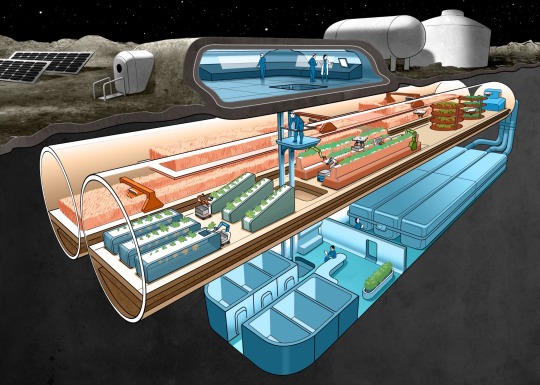
Lunar farm concept from the Japan Aerospace Exploration Agency (JAXA), undated.
162 notes
·
View notes
Text

https://flic.kr/p/2qV7BAS
11 notes
·
View notes
Text
Japan will make moon-exploration history in the middle of next month, if all goes to plan. The Japan Aerospace Exploration Agency (JAXA) announced today (Dec. 5) that it's targeting Jan. 19 for the lunar landing of its robotic SLIM ("Smart Lander for Investigating Moon") spacecraft. The newly revealed plan calls for SLIM to begin its descent toward the moon on Jan. 19 around 10 a.m. EST (1500 GMT; 12 a.m. on Jan. 20 Japanese Standard Time). Touchdown — which would mark the first-ever soft lunar landing for a Japanese spacecraft — is scheduled to occur about 20 minutes later. The 8.8-foot-long (2.7 meters) SLIM probe launched atop a Japanese H-2A rocket along with an X-ray space telescope called XRISM on Sept. 6. XRISM deployed into low Earth orbit, but SLIM began making its circuitous, fuel-efficient way to the moon. If all goes smoothly, SLIM will enter lunar orbit on Christmas Day, then spend nearly a month prepping for its technology-demonstrating touchdown attempt. Success would make Japan just the fifth nation to put a probe down on the moon, after the Soviet Union, the United States, China and India. This landing could also open doors for even more ambitious exploration feats down the road.
Conitnue Reading.
63 notes
·
View notes
Text

The good news is that on Jan 20, 2024, Japan's robotic moon lander touched down almost exactly where it was supposed to. The bad news is that it landed upsidedown.
Unfortunately, its solar panels aren't positioned correctly to generate power and Japan's Aerospace Exploration Agency hasn't figured out what to do about it yet.
Fortunately, two small rovers successfully separated from the crewless mothership just prior to touchdown (they were manufactured by the same toy company that created the Transformers). It was one of these baseball-sized robots that was able to snap the image of the spacecraft with its head in the moondust.
#moon#Japan#aerospace#space#exploration#astronomy#astrophotography#science#aesthetic#landscape#physics#landscapes#outer space#cosmos#JAXA#photography#funny#nature#NASA#beauty-funny-trippy#lander#upsidedown
44 notes
·
View notes

